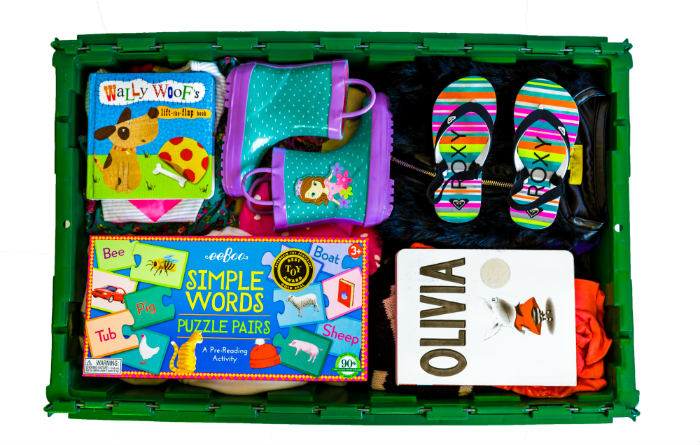
Functionality, charm, quality, and character are becoming appealing traits that many people are looking for in a new abode. As a result, there is a growing movement to take the “less is more” philosophy and apply it to homes. Many folks living in the best Bay Area cities with increasing populations and shrinking homes like San Francisco, Oakland, and San Jose are moving into smaller, smarter residences, and deciding that less maintenance, lower utility bills, and a smaller footprint are worth the effort it takes to downsize possessions as they decrease square footage.
“What we all want is a life of quality,” explains homebuilder Randy Wise. “This is nothing new, of course, but the way we think about it and attempt to achieve it has changed. There has been a backlash against conspicuous consumption, and we’re seeing a new understanding that true luxury is comfort, solace and connection.”
There are other reasons beyond ideology that lead people to downsize and move to smaller spaces. Those life changes include job relocations, the addition of a roommate or significant other, which requires two sets of furniture and belongings to be merged together, or a child spontaneously—it seems—becomes an adult and leaves the nest, leaving behind lots of space and too much clutter. Whatever the case might be, downsizing allows people the opportunity to sell items and make money, give to a charity, and reduce moving costs because there are fewer items to move.
However, emotions are attached to personal possessions, and whether you are downsizing out of necessity or philosophy, it isn’t an easy task to rid yourself of items that got you through life at one point in time. Although, once you make the decision to downsize your belongings that are collecting dust, the release becomes not only gratifying, but thrilling. Downsizing is a step in a new direction, and that stride is forward, not backwards.
“There comes a point when that large and grand home filled with possessions exhausts you,” says Designer Rose Marie Brabec. “You don’t even see those possessions anymore. So you decide to get off the treadmill of acquisition and go for a smaller home. That means getting rid of a lot of furnishings. What to keep? What to give away? What needs freshening up? It’s a challenge, of course, balancing people’s memories and the functionality of their new spaces.”
Cheryl Ng Collett, who is a lifestyle journalist, and her husband moved to the United States from Australia, and began participating in the consumerism-soaked American dream right after they arrived with only four suitcases full of everything they owned. After 15 years in the U.S., they produced three children, bought a large four-bedroom house with side rooms galore, and accumulated a world of disorganized possessions.
“Every nook and cranny was crammed with stuff: Books, toys, clothes, kids’ artwork, paperwork, cleaning products, kitchen gadgets—you name it, we had it, probably in multiples,” Collett says. “It felt like we were drowning under all that stuff.”
Every New Year’s Eve the family made the resolution to downsize, and every year they failed to act on it, until one year when they got down to business, organizing all of their belongings, reducing their possessions, and moving into a more manageable home.
“The more we purged, the better we felt,” she continues. “Our smaller space has forced us—willingly—to use every room efficiently. And because we’ve streamlined and carefully curated our possessions, everything we have kept has purpose and gives us joy. Though the simplification is still a work in progress, having a smaller carbon footprint has given us more freedom and less stress. Surprisingly, the simple mental task of asking “Do we really need this?” has filtered to other aspects of our lives and it has helped us sift through what is most important for our happiness.”
You can find that happiness as well, and we will tell you how to do it.
Measure your New Space and Adjust Accordingly
The first step you must take in downsizing your possessions is to take measurements of your current residence and your new home to establish how much space you have available after the move. It is a practical measure to reduce your belongings by the percentage of space you are losing, adjusting your possessions according to the new scale, or the difference in square footage.
“If you’re decreasing your space by 50 percent, make it a goal to de-clutter and let go of half your stuff, too,” professional organizer Monica Ricci says.
You might even want to reduce the size of your furniture to match smaller rooms and spaces in your new home. Consider that whatever money you make when you sell your furniture can go towards buying items that take up less space in your new residence, and the result is a less cramped living environment. Also, by selling your clunky couch and coffee table, you don’t have to pay someone to move the items. In other words, sell the bulky furniture before the move and buy new items once you move into your new home, saving on the cost of moving them.
There is no “Maybe” in Downsizing
As you downsize, take on one room or area at a time, and don’t try to do it all in one day or you will hit emotional burn out in a hurry. Make a schedule, and spend two hours at a time going through each space in your residence. Start with the least trafficked areas—your garage, basement, and spare room—and then move to the rooms you use the most.

If you are moving in with someone else, the two of you will need to get together and determine a plan for merging your belongings. Bring a list of things you cannot live without, and understand that you and your new roommate will have to make some hard decisions in order to accommodate two sets of household items. You certainly do not need multiple sets of dishware and duplicate furnishings. Be practical and understanding in these situations because being stubborn won’t get you the intended results of your decision to live together and live efficiently.
In any case of downsizing, do not create a “maybe” pile. There are no open-ended choices in the situation to downsize. Relocation professionals call this part of downsizing the OHIO rule, “Only Handle It Once”. Moving your items from pile to pile makes things more emotionally difficult and consumes a lot of time.
Use a two-year rule when determining what to keep. If you haven’t used an item in two years, get rid of it. If you have two of the same item, one of them must go. You do not need the old coffeemaker or coffee pot when you have a new one. You don’t need three winter jackets when you only wear one of them. You don’t need your 20th-century desktop computer when you have a newer and much more functional laptop. In addition, don’t keep things that are broken and need to be repaired. No charity, friend, or family member wants your holiday lights that don’t work, your chipped vase that you thought you might fix, or your food storage containers with no lids; and you shouldn’t want them either. Move them to the trash bin.
Jamie Wiebe of Realtor.com writes, “We all have a few skeletons in the closet. For most of us, those skeletons are broken electronics. Whether they’re old laptops, cracked cell phones, or numerous micro-USB chargers, those suckers need to head to the slaughterhouse.”
For clothes, use a “two-season rule”. If you haven’t worn the item in six months, move it out, with some exceptions for classic items, such as sweaters and jackets that can be worn year after year, or classic spring and summer items that can survive more than one season. Also, since kids grow fast and their clothes become obsolete quickly, donate or sell articles that don’t fit them anymore. Those items can collect fast, and you might be surprised by the amount of clothing that doesn’t fit them anymore. The same goes for their toys and stuffed animals. More than likely, they own things they haven’t touched in a year or more.
The Hardest Decisions of Downsizing
Karen Scott () and her husband moved from a large to a smaller house to cut down on maintenance, from the endless hours they spent manicuring their yard to the cost and time consumption of keeping their pool clean. Since making the decision to downsize, they feel freer, but the task didn’t come without making many difficult decisions. They even decided to release themselves from family heirlooms and antiques.
“What were we going to do with all of our antiques and treasures that we could not take?” Scott asks. “I had to make some very tough decisions, and there were some casualties. You hold onto antiques because of family connections, but really, they are burdens, and you are only a steward.”
If you have a large collection of antiques or collectables, keep a few of your favorites and sell the rest, or pass them on to family members “now”. Especially for legacy items like family heirlooms or old photo albums, give them to a family member while you can see their joy in receiving them. In addition, donate books to libraries, knowing that they are still in the world and providing value to eager readers.
Also, you might have a large collection of photographs that occupy albums and take up an entire closet. In this case, take a few particularly important photos, make large prints, and hang them on your wall. Then, merge important photos into a few albums, and digitize the rest of them. At the very least move the photos from their dusty albums into small boxes. Essentially, you can downsize 10 albums into one shoebox, or pass the photos down to your adult children or other family members, so they are not your anchor any longer.
While we’re on the topic of your children, if they have moved out, you might want to consider asking them to move out all of their possessions as well. Tell them it is time to get them or they become yours, and if they are yours, you can do whatever you want with them. Your house should not be their storage unit if you want to keep things lean around your residence.
Items with Value can be Sold in a Global Marketplace when Downsizing
Twenty years ago, the options to sell your items were limited to a garage or yard sale, but with the Internet at your disposal, there are lots of choices, and you can make a good deal of money that can be used to fund your moving expenses or buy furniture that fits your lifestyle and new space.
The first thing you will want to do is appraise the items you wish to sell. There are consignment stores that can handle this sort of thing for you. They are experts at evaluating the worth of items, so you can put the task into their hands, and they will give you a portion of the selling price once someone purchases your used goods. If you do not want to deal with a consignment store, you can turn to the many Internet stores available to sellers. Here is where you can deal your items on the Web:
The garage sale or yard sale is still the best option if you live in a house and the choice is available. You can set prices, barter with people on the spot, not have to worry about shipping items to buyers or schedule times for them to be picked up, and all the cash goes in your hands without a commission fee.
Donating Items While Downsizing
Free pickup is a nice option with most charity organizations if you have enough items to make it worthwhile to them, such as a piece of furniture and a few trash bags full of clothing. Get all of your donated items together, schedule a pick-up, and do it only once to save yourself the time. Also, remember to get a donation voucher from the charity and deduct your good deed from your yearly taxes. Here are some SF Bay Area Donation Centers you can use for items that you couldn’t sell or chose not to put on the market:
Goodwill of San Francisco, San Mateo, and Marin
Habitat for Humanity of the Greater San Francisco Area
The Salvation Army in the San Francisco Bay Area
Moving to Your New Residence
When it is time to move your downsized essentials, choose a mover wisely and if you’re truly downsizing, you certainly don’t want to collect cardboard boxes from dumpsters and liquor stores, while you’re attempting to move boxes of items out your door. Instead, rent moving containers, and if you take the environmentally friendly option of renting them

from ZippGo they will bring the plastic boxes to you, and most importantly come get the boxes when you’re finished moving, so you don’t have to worry about another collection of items that need to be removed from your newly downsized existence. ZippGo has great packages for renting containers and buying packing supplies in the San Francisco Bay area.
